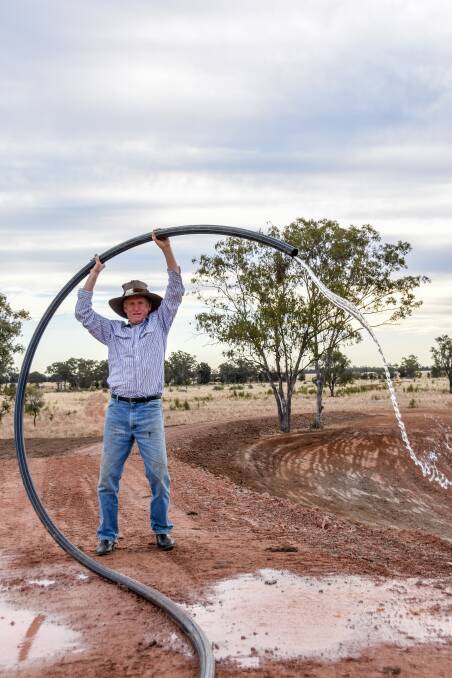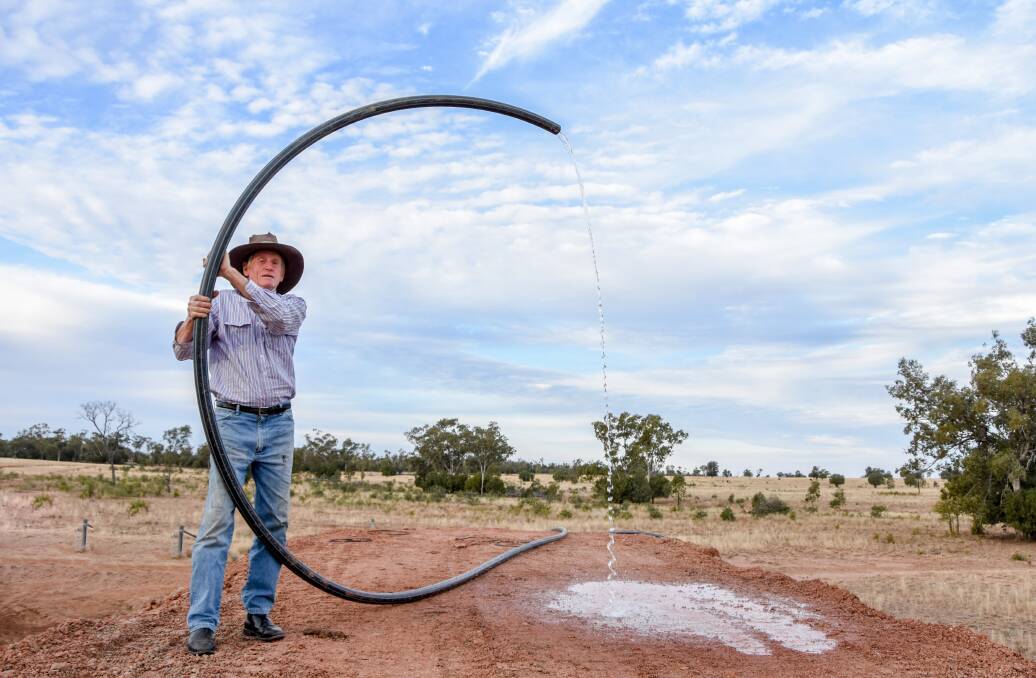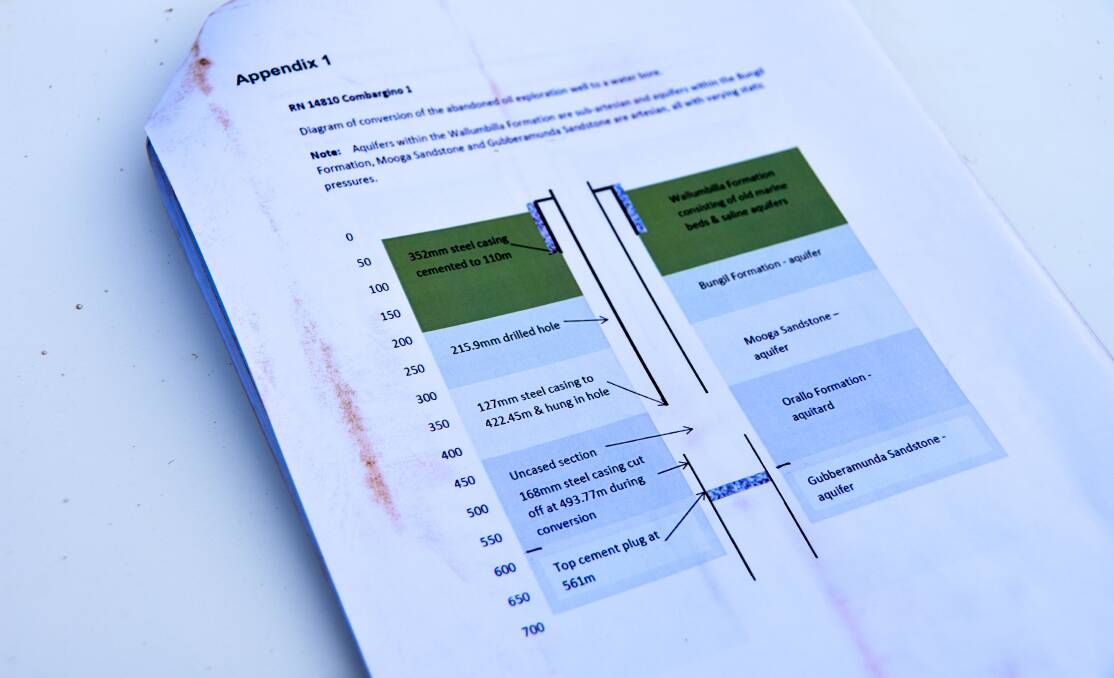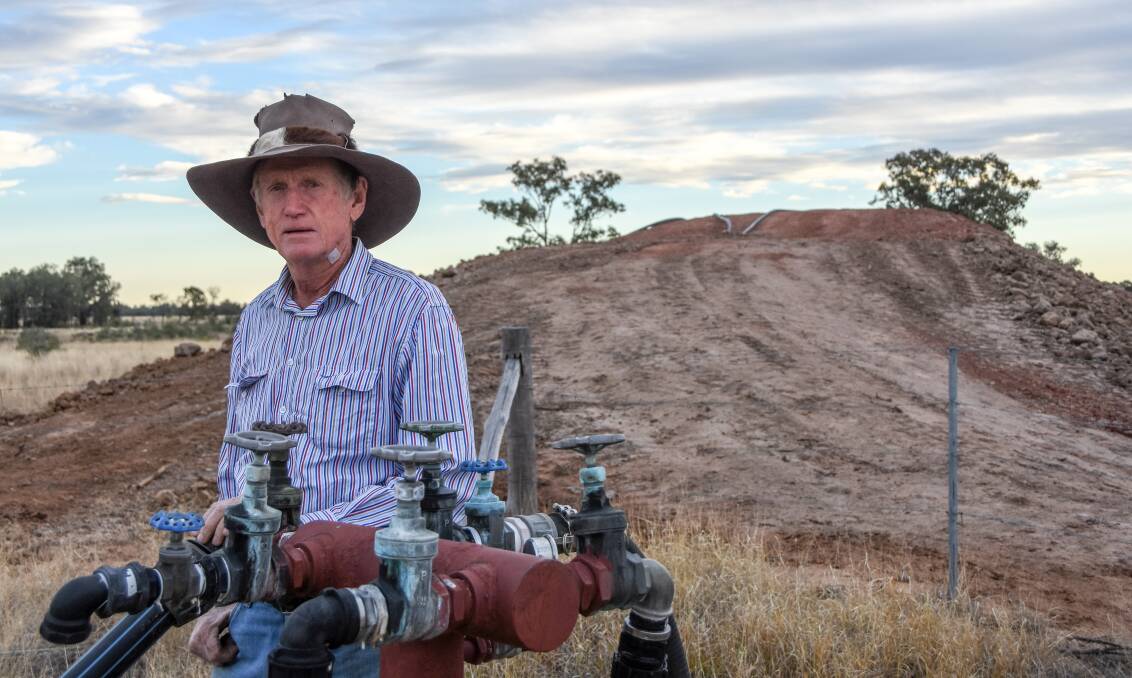A MARANOA grazier has constructed his own ‘great wall’ in a bid to overcome ongoing issues of gas build-up in his once-reliable Great Artesian Basin bore.
Subscribe now for unlimited access to all our agricultural news
across the nation
or signup to continue reading

Grazier and Basin Sustainability Alliance chairman, Lee McNicholl spent $14,000 building a dam, contour bank and five metre wall on his Wallumbilla cattle property in a bid to keep water flowing around his property.
He intends to install a tank to reach eight metres, allowing the bore water to run into it and decant gas.
Without the large scale investment, Mr McNicholl was faced with abandoning troughs where water no longer flows or regularly monitor the bore to release the build-up.
The presence of gas in water bores is a common phenomenon in the Surat Basin noted from well beyond the onset of the coal seam gas industry, in the early 1900s.
Mr McNicholl’s bore was first drilled in 1961 and in the 52 years succeeding that, had reduced 20m in head pressure or 0.4m/year.
But, from 2016-2018, the head pressure dropped by 1.1m/year.

Petroleum and gas proponents’ water limitations from the GAB aren’t managed under the same water plan as landholders and are the responsibility of the Department of Environment and Heritage Protection.
Findings from hydro-geological assessments of the GAB found CSG water extraction was increasing.
Mr McNicholl said water discharge had exceeded recharge for many years and the aquifer had obviously reached a critical pressure, resulting in gas being liberated

“Doubling the take by the CSG/mining sector has only dramatically worsened this unsustainable situation,” he said.
“This reduction in pressure liberates any gas in solution and turns it into ‘free gas’, which then can restrict/block water flow in a poly pipe reticulation system.”
He predicted the liberation of gas would take place in other aquifers too.
“The Great Artesian Basin is quickly becoming the great non-artesian basin,” he said.

The Department of Natural Resources Mines and Energy spokesperson said data gained from Office of Groundwater Impact Assessment UWIR monitoring and the Groundwater Net program indicated CSG activities had not significantly impacted bore levels in aquifers other than the Walloon Coal Measures.
APPEA Queensland director, Rhys Turner said processes were in place if landholders had concerns.
“Where a landholder has concerns about any potential impact from the industry on their existing bores there is a comprehensive recourse process in place to investigate the matter and if found to be valid, have the issue rectified at no cost to the landholder,” Mr Turner said.


